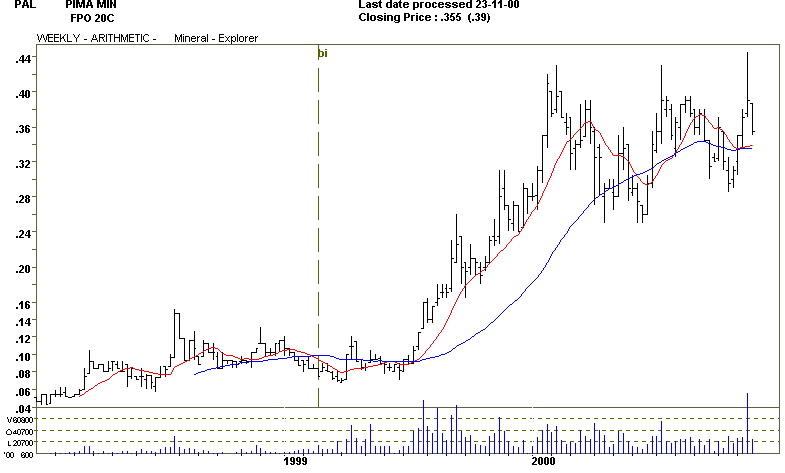One metal that may be worth following over the next year or two. A chart of pima mining is attached.
Report compiled by G.E.L. Holton, PhD, B.Appl.Sc.
"Magnesium is the lightweight champion of metals, with aluminium being one
and a half times as dense. It is this property of being much lighter than
aluminium, coupled with the high strength of its alloys, that is the major
interest of the vehicle and aircraft industries. The most widely used
casting alloy contains a mixture of aluminium, zinc and manganese with the
magnesium, which greatly increases its strength and to improve corrosion
resistance. Many important alloys also contain small amounts of magnesium:
aluminium alloys for drink cans, and in the desulphurisation of steel.
The problem is that because of the difficulty in extracting the metal from
its ores the cost is far higher than aluminium, making it rarely used in
domestic items such as kitchenware or power tools. Magnesium alloys are
used mainly in casting, and no metal can be machined as easily or as fast
as magnesium alloys. Besides aircraft and motor vehicle components, its
alloys are used in chain saws, textile machinery, mobile phones, compact
disc players and computers.
Magnesium's problem of being expensive and technically complex to produce
is being overcome by legislative pressure on car manufacturers to cut
emissions and improve fuel economy. The weight of the car can be greatly
reduced by replacing heavier metals with magnesium alloys, thereby
improving the weight-to-power ratios and reduce fuel consumption.
A study by Saloman Smith Barney has found that there are nine proposed
magnesium metal projects in Australia with a combined capacity of 500,000
tonnes per annum, more than the world's present production. The report
concluded that because of this limited consumption only one project was
therefore economically feasible at the present price of US$1.35/lb on the
international markets.
In Queensland the Australian Magnesium Corporation (AMC) venture with the
Ford Motor Co. is reducing the cost of production to ensure increased
consumption of the alloy. At an estimated cost of $1.1 billion the Stanwell
project in Queensland will be the first commercial magnesium metal plant to
commercially operate in Australia in 2004. AMC will source magnesite
feedstock from the Kunwarara deposit owned by the Queensland Magnesia
Project (QMAG). AMC's general manager Richard Hill says the big money is in
the processing plant'. Its previous problems with the pilot plant seem to
have been overcome.
The only other processing plant to be considered is SAMAG Ltd., 80% owned
by Prima Mining and 20% by Resource Finance Corp., which will process
52,500 tonnes per annum at Weeroona, near Port Pirie, South Australia. A
feasibility study suggests that the $375 million plant would produce
magnesium at US$0.600/lb. The feedstock for SAMAG will come from Leigh
Creek with magnesite ores of 42%. SAMAG will use the Dow process, used to
extract magnesium from sea water, at its processing plant. The director of
SAMAG, Ray Soper, says that 'Our operating costs on balance are competitive
with other processes', but we have 'a major capital advantage'.
